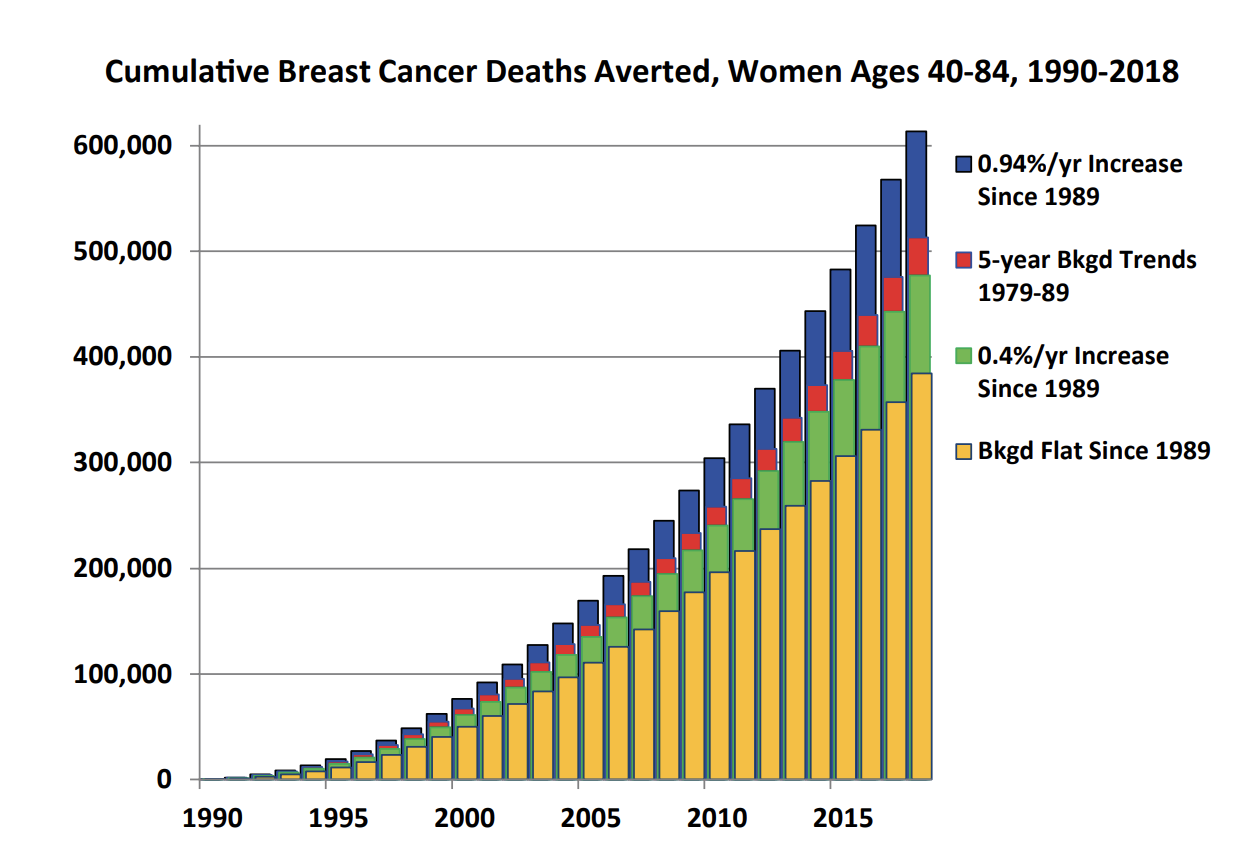In this day and age, breast cancer is no longer the death sentence it used to be. The latest estimates show that modern medicine has saved hundreds of thousands of American women from a cancer death that used to be far more common.
It's still one of the most common cancers out there, so the impact of this life-threatening disease cannot be understated. But over the past three decades, its death toll has taken an impressive downturn.
Since 1989, it is likely that around half a million female deaths have been thwarted by mammogram screenings and modern breast cancer treatments - a statistic that just reinforces how crucial early detection truly is.
"Our study provides evidence of just how effective the combination of early detection and modern breast cancer treatment have been in averting breast cancer deaths," says radiologist Edward Hendrick from the University of Colorado.
Breast imaging techniques were first developed in the 1960s, and ever since, mammograms have become central to early detection.
Today, with the advent of digital mammography, yearly breast screenings have become the most effective and affordable tool for detecting breast cancer in women over 40.
During these screenings, if breast cancer is found before it spreads, the 5-year survival rate is 99 percent.
On a population level, the success of survival is clear to see. Analysing breast cancer mortality rates and female population data for American women between the ages of 40 and 84, the researchers tracked the impact of this cancer over the past three decades.
In the years since 1989, when screenings first became widespread, somewhere between 384,000 and 614,500 breast cancer deaths are thought to have been prevented.
What's more, this trend is only gaining momentum. Last year alone, an estimated 27,083 to 45,726 lives were saved from breast cancer, decreasing the expected mortality rate by 45 to 58 percent.
( © 2019 American Cancer Society)
But there's still plenty of room for improvement. Even though almost every American woman diagnosed with breast cancer receives some sort of cancer treatment, less than half of US women over 40 receive regular screenings as the medical guidelines suggest.
"While we anticipate new scientific advances that will further reduce breast cancer deaths and morbidity, it is important that women continue to comply with existing screening and treatment recommendations," says Hendrick.
This isn't to say that mammograms are a perfect solution - far from it. These screenings are known to produce high rates of false-positive results and unnecessary biopsies are well documented.
In the end, however, it's all about the balance. Hendrick says that all too often, the media focuses on the negatives of screening while downplaying the positives.
"The best possible long-term effect of our findings would be to help women recognise that early detection and modern, personalised breast cancer treatment saves lives and to encourage more women to get screened annually starting at age 40," says Hendricks.
This study has been published in CANCER.
Editor's note: A previous headline stated a million lives had been saved.
